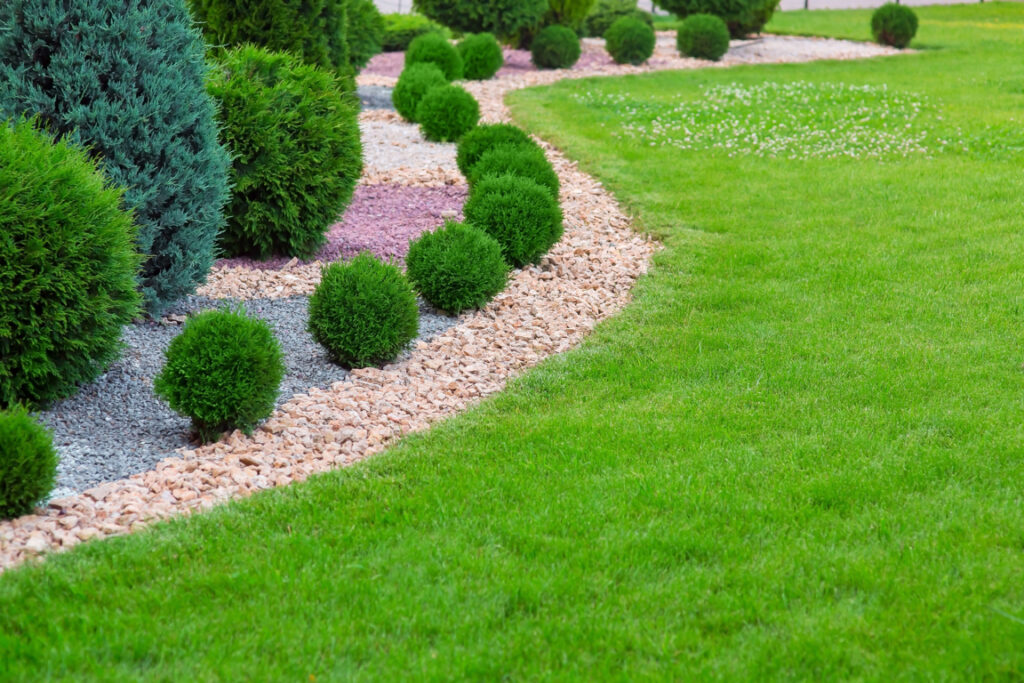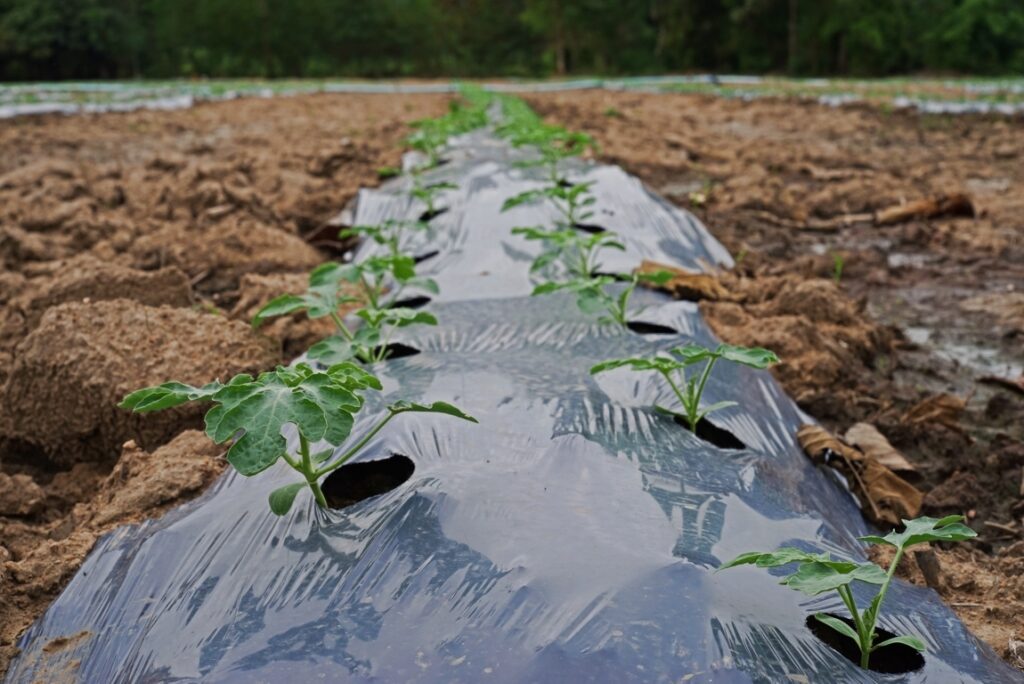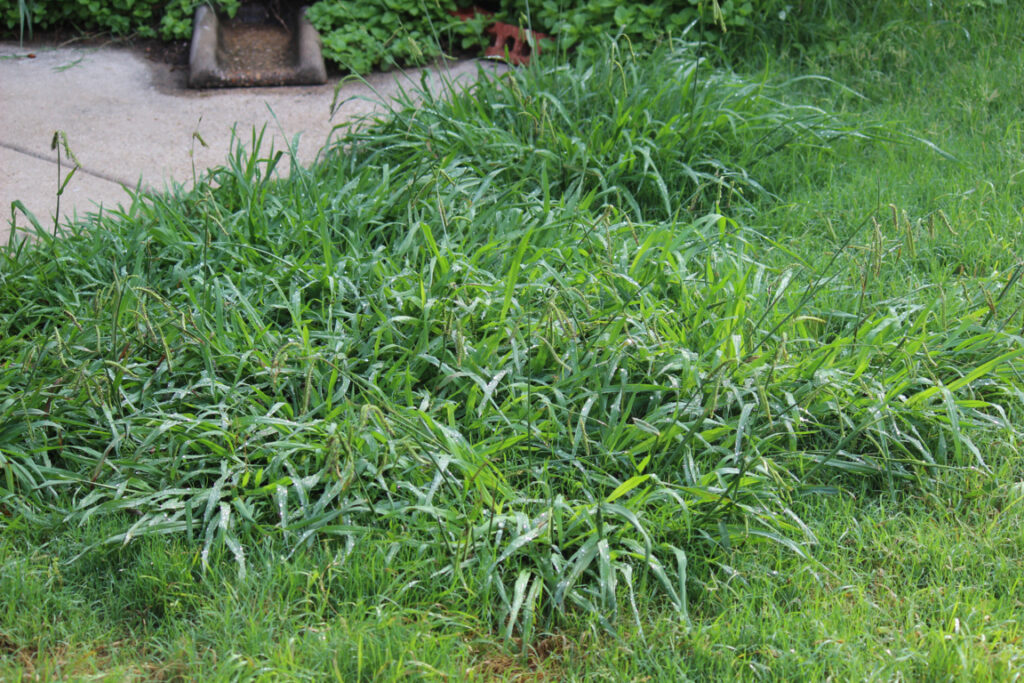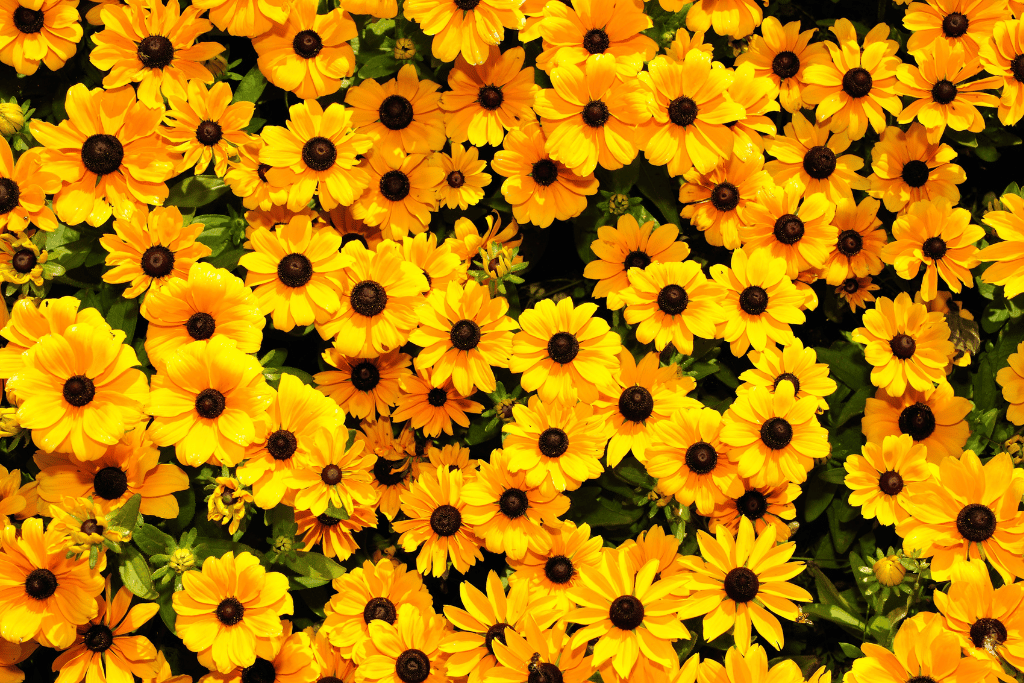
At my childhood home we’ve always had rocks covering the surface of our flower beds surrounding the house. I never quite thought of it as a type of mulch, but in fact, it is.
My parents planted heat tolerant and drought resistant plants in these spaces, on account of the warming effect that rocks have on the area they cover.
The warmth and good coverage means they rarely ever have weeds to contend with, which is a huge time saving aspect. Less time weeding affords more time to maintain the plants.
The hot, dry rocks keep the foundation of our home dry and free from invading creepy-crawlies.
And the most appealing feature?
It just looks nice! When the flowers bloom the beautiful colors just pop against the uniform backdrop of the landscaping rocks.
Sure, it was an investment up front that required a good deal of physical labor, but these rocks aren’t going anywhere anytime soon. They’ll get the job done for years to come.
The aesthetics, practical purposes and longevity of inorganic mulches make them well worth the money and time.
What is Inorganic Mulch?
Inorganic mulches are materials used for the same purpose as all other mulches. The distinguishing factor is that inorganic mulches are not derived from living materials. Therefore, they will not break down over time or add nutrients to the soil.
Despite this fact, they can be extremely useful in many different settings. The choices are plenty when you’re looking to invest in an inorganic mulch. Each type has particular characteristics that make it the perfect choice, given a specific scenario. Let’s touch on each type and explain what it consists of and the proper way to implement it in your growing space.
Types of Inorganic Mulch
The materials that make up different types of inorganic mulch are quite varied. Here you’ll find a comprehensive list.
Rock or Gravel
Rock mulches are available at any home improvement store, sold in bags or bulk. It’s a heavy job to transport them and then spread evenly throughout a bed. But once finished, there’s no way you won’t be satisfied at the clean, consistent look it gives your bed.
Rocks, pebbles and gravel are heavy and won’t blow away. They help hold the soil in place and prevent soil compaction.
Rocks and gravel may not be the best choice for every gardening space but here are some suggestions to perfectly put them to use:
- Apply a 6-12” layer of gravel around the foundation of your home to prevent moisture from seeping in and causing damage. This will make these spaces less hospitable to terrorizing pests like termites and cockroaches.
- Gravel or stones are the best choice for laying out a driveway, walking path or hardscape. Building up a thick layer will prevent weeds from sprouting and keep these areas dry and free from muddy puddles.
- Rock gardens and rain gardens are popular additions to enhance the beauty of your landscape.
Don’t use rocks as a mulch around trees or shrubbery, unless they are heat loving, acclimated to desert conditions. Rocks reflect the sun’s rays and will heat the soil which can cause damage to the roots.

Landscape Fabric
Landscape fabric is an appropriate option in many circumstances. Also known as geotextiles, the fabric will smother weeds while permitting a free exchange of air and water.
Landscape fabric is laid down as a base layer, secured and then soil or another layer of mulch can be applied on top. From there you can plant without the worry of drainage issues or bothersome weeds popping up.
A couple places you should consider using landscape fabric:
- An initial layer of landscape fabric around trees and shrubs will provide protection against weeds and compacted soil. Organic mulch can then be applied on top.
- Areas where your garden or lawn has a steep grade can benefit from laying down sheets of landscaping fabric. It will prevent erosion and keep the soil in place.
Landscape fabric may not be the best choice in annual flower beds or vegetable gardens where you’ll be doing a lot of digging.
Rolled Plastic Sheeting
Black plastic mulch may be the best choice for battling weed invasions. Commonly used as a bed covering in agriculture, it makes large scale maintenance a snap.
After being laid out, planting holes are punched and you’re all set for a weed free bed. If you can get it applied early in the spring it will exponentially increase the warming of the soil. Plastic is also the cheapest of inorganic mulches.
The caveats to be aware of when using plastic mulch are:
- Air and moisture can get trapped under the plastic tarp. Keep this in mind when planning the location, it may not be ideal for damp or shady spots.
- It should be topped with an organic mulch to improve the appearance. Nobody wants the surface of their gardens to resemble a trash bag.
- Plastic tends to disintegrate quickly under direct sun exposure. If left out in the field all year it will likely need to be replaced after one season.
- Removing old plastic sheets can be a pain in the you-know-what. It can deteriorate into lots of little pieces, littering your soil.
- It’s very lightweight and has to be anchored down at all times.
- The amount of plastic used in agriculture is alarming. It all eventually ends up in a landfill, polluting the earth.
Plastic may make vegetable gardens easier to maintain and more prolific. But don’t apply it around bushes or trees. The big roots will suffer from the excessive moisture.

Reflective Mulch
Shiny metallic sheets are a unique type of mulch. Much like black plastic you’ll have to lay it out, anchor it down and cut planting holes in it. This silvery mulch reflects and intensifies the sunshine, which has a few benefits.
- It confuses common pests like aphids, whiteflies and thrips. They’ll effectively be repelled by the intense bright reflection.
- Reflective mulch can enhance production in vegetable gardens. The light reflects from the ground up, providing light to areas of a plant that wouldn’t otherwise receive it. Expect boosted yields when using this material.
- It will outlast black plastic mulch.
- The metallic mulch works extremely well with citrus, combating disease by providing extra heat and light.
There are however, a few downsides of the shiny stuff. There is a possibility of overheating plants, the cost is prohibitive and it is not at all easy to look at. Sunglasses may be required when you work with it. Consider setting up an irrigation system to make sure plants get enough water.
Rubber Mulch
Tiny pieces of rubber may seem an unlikely mulch, but it definitely earns a place in the conversation. It’s sturdy, lightweight and will hold up to the outdoor elements.
Use a couple inch layer of rubber mulch to improve moisture retention. It will also help hold the soil in place and keep it warmer throughout the winter months. Rubber mulch is available in lots of different grades and colors, so it’s easy to match it up with the look of your landscape.
Shredded rubber also does a great job of smothering weeds and repelling the spread of disease and fungus.
Rubber mulch is a fantastic choice to consider for:
- Perennial flower beds. You won’t be digging or consuming produce from here. Your perennials will receive a boost from the added warmth in the early spring.
- Playscapes for children. We all know most kids are rough and tumble in nature. Rubber mulch around swing sets and playgrounds can help minimize some of those inevitable boo-boos they endure.
There have been some warnings issued about the safety of rubber mulch being used in vegetable gardens.
It may leach harmful chemicals into the soil over time. It’s also flammable, so shouldn’t be used around outdoor fire pits. The initial cost can be expensive, but like other inorganic mulches, rubber mulch will serve your landscape well for many years.

Advantages of Inorganic Mulch
To recap, let’s summarize the reasons why you might choose inorganic mulch over organic.
- It has a longer lifespan, lasting for multiple seasons. You can save time and money in the long run.
- Plastic mulches control weeds better than most organic mulches.
- Some organic mulches can leach nitrogen from the soil, resulting in deficiencies in your garden. Organic mulches won’t have this effect.
- It is weed-seed free! There is no chance of propagating weeds in your garden.
- Inorganic mulches make areas unappealing for pests to invade.
- Rocks and gravel look quite attractive in driveways and walking paths.
Should You Consider Inorganic Mulch?
Inorganic mulch is a great solution in many cases. Other times, it seems it can be an environmental liability.
We’ve discussed the pros and cons of every type, so use this information wisely. Assess the specific needs of your landscape and consider carefully.
Are you willing to make an expensive initial investment?
Can you properly secure sheets of fabric and plastic to keep them from flying away?
Are you physically able to move and spread loads of rocks or gravel?
Once the purchase is made there is no turning back. Inorganic mulch can be extremely beneficial, but only when well understood and applied properly.
Frequently Asked Questions (FAQ)
What is the best type of inorganic mulch?
Every type has its appropriate setting and place. Rock mulch may look nice in beds around your house, but plastic mulch is much more practical for large scale growing operations where appearance isn’t a consideration.
What are the advantages of inorganic mulch?
There are many advantages to using inorganic mulch. It retains moisture, controls weeds, protects plants’ roots and can be used for walking paths and driveways.
What is the difference between inorganic and organic mulch?
Inorganic mulches are made from non-living materials, like plastic, fabric or stone. Organic mulch comes from living sources that will break down with time.
What are some of the disadvantages of inorganic mulch?
They heat up and make access to the soil difficult, they do not provide nutrients to plants and some may be harmful to living things and the environment.



